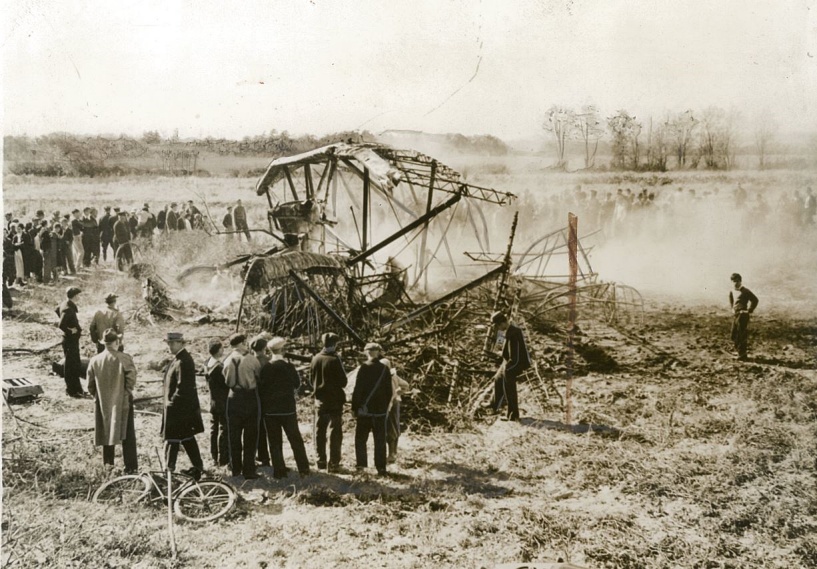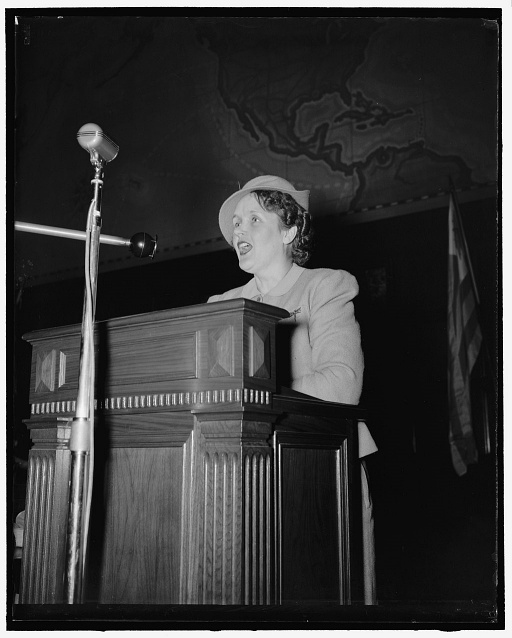Ruth Nichols Aviatrix, was an exceptionally skilled pilot, humanitarian and tenacious individual. Destined for a high society life, in which her family expected she play the debutante, she rejected these standards in favor of a career in the sky.


Nichols was the first woman in the world to obtain a hydroplane license and the only woman to hold both the world’s speed and altitude record for heavy land planes.
She was one of the original Ninety Nine’s, co-founded with Amelia Earhart, an organization which aimed to support and advocate females in aviation. It was a difficult field to break into as a woman, with gendered stereotypes demanding a gentle civility that aviation did not offer. It was for these and many more reasons Ruth Nichols was an honored member of the Longines Honor Roll.
The hours were long, the flights were often dirty, arduous and dangerous. It was widely believed that women did not possess the courage nor the stamina for such a career. Boy, were each and every one of those detractors wrong.
Nichols career was so exceptional that she, and other female counterparts, made long strides forward in breaking gender stereotypes. Women in aviation often had to push themselves, harder, further and faster than their male colleagues in order to prove their worthiness while smashing any sexist presumptions in the process.
Nichols was one of the brave and tenacious women who dared to conquer the skies. ‘One could get a rousing argument going about who was the best woman flier of the Golden Age, but there wouldn’t be much disagreement about who was the grittiest: that would be Ruth Nichols.
Nichols was born into a wealthy family and attended the finest schools; she was expected to enter high society and take her place in the Social Register. Because of her blue-blood background, she was called the “Flying Debutante” by the press, a name she hated.’[1]
Born February 23rd, 1901 in New York City to a wealthy family Nichols was expected to follow the standard protocol expected of a daughter. She was sent to the Masters School, in order to prepare her for the duties of a proper young woman.
Upon graduation her father gifted her a flight with Edward Anderson Stinson Jr. Thus began her passion for aviation. She later remarked: “I haven’t come down to earth since.”[2]
Ruth Nichols always remembered the first time she flew through the clear blue sky of a summer’s day, an 18-year-old girl who until then had been terrified of heights.
“Suddenly, I felt like laughing,” she wrote of that day in 1919. “What had I been afraid of? This was only air. A minute ago, I had been an earthbound caterpillar. Now, I was an airborne butterfly. I was free as the air itself. I wasn’t afraid of anything any more.”
Encyclopedia.com/NicholsRuth, https://www.encyclopedia.com/women/encyclopedias-almanacs-transcripts-and-maps/nichols-ruth-1901-1960 (date accessed March 2, 2022)
While studying pre medical at Wellesley College, Nichols took secret flying lessons. Shortly after her graduation from Wellesley, she became the first woman in the world to gain a hydroplane license.
Her seminal flight occurred in the January of 1928. She was co-pilot to Harvey Rogers, previously her flight instructor, during a journey that spanned from New York to Miami, Florida. Together they set a new nonstop record in a Fairchild FC-2.
Nichols was then hired by the Fairchild Aviation Corporation as a sales manager. She had received much publicity from the pioneering flight and brought positive attention to Fairchild.
In 1929 Nichols, along with Amelia Earhart, founded the Ninety Nines. The group continues to this day supporting and advancing the careers of countless female aviators and astronauts.
Its conception was crucial in influencing official institutions such as National Aeronautic Association and the Fédération Aéronautique Internationale; urging greater equality and acceptance within the field.
In 1929 she was among the 20 competitors of the Woman’s Air Derby. This the first official and exclusively female led race in the United States. The race began in Santa Monica, California on August 18th set for Cleveland, Ohio. Unfortunately Nichols crashed before reaching Ohio but this in no way deterred her from jumping back into the cockpit.
Nichols went on to set a number of extraordinary records while promoting various aviation companies. She completed a record cross-country flight in just 13 hours and 21 minutes in 1930, beating the famed Charles Lindbergh’s previous time.
In the Spring of 1931 Nichols set both the women’s world altitude record of 28,743 feet and the woman’s world speed record at 210.7 miles per hour. She suffered a nasty crash in June 1931 when attempting a solo crossing of the Atlantic Ocean.
She was unable to fly for some time and embarked on her next record as soon as she was able. Nichols set the woman’s distance record of 1,977 miles in the October of 1931. She flew from Oakland California to Louisville Kentucky.
Nichols was moving at an extraordinary pace, again and again setting new records, blazing onto aviation’s world stage with exceptional skill. On February 14th, 1932 she set a new world altitude level at 19,928 feet in a Lockheed Vega.
Breaking boundaries and gender divide even further, on December 29th 1932, Nichols became the first female pilot of a commercial passenger airline. She flew for New York and New England Airways.
Nichols suffered severe injuries in 1935 during a private wedding flight, in which two couples were to be married while airborne. The plane crashed shortly after take-off, killing the pilot. Nichols escaped with a broken ankle, wrist and nose as well as contusions and burns. She was earthbound for nearly a year as she struggled to heal.

On return to her aviation career Nichols turned her attention to charitable pursuits. She worked for the Emergency Peace Campaign in order to help find alternative solutions to international conflicts as WWII loomed ever closed. This Quaker organization aimed to find a peaceful way to resolve any issues.

She went on to lead Relief Wings in 1939, ‘a humanitarian air service for disaster relief that quickly became an adjunct relief service of the Civil Air Patrol’[3] during WWII.
She would climb to the rank of Lieutenant Colonel in the Civil Air Patrol for her extraordinary efforts and unfaltering relief work.
Nichols had become incredibly passionate about humanitarian causes throughout the war and she continued this crucial work well after the conflict had ended.
She utilized her celebrity status to bring attention to important causes, raising both funds and awareness.
She actively supported UNICEF, Save the Children, the United Hospital Fund and the National Nephrosis Foundation.
She organized a round-the world tour with UNICEF in 1949.
In 1958, Nichols reached 1,000 miles per hour at an altitude of 51,000 feet in a TF-102A Delta Dagger.

At 57 years old she set a new women’s speed and altitude record, proving that age did not inhibit talent.
Contented with the skies Nichols next looked toward the stars taking part in NASA’s Mercury program. Nichols along with many other determined individuals sought to prove that women were capable of space travel.
Nichols urged that Air Force scientists should include women in their spaceflight plans. This was a hotly contested issue, with some considering the idea with shock and horror. Nichols and her colleagues underwent the same centrifuge, isolation and weightlessness tests as their male counterparts.
During the course of her career, Nichols flew each and every type of aircraft made. This included the dirigible, glider, auto-gyro, seaplanes, biplanes, tri-planes, transport aircraft, and a supersonic jet. Her passion for the craft was unparalleled and her determination unmatched.
Nichols had suffered from depression throughout her life and died of an accidental overdose on September 25th, 1960. Nichols had been a courageous and tenacious pilot throughout her career. She had forgone her family’s debutante wishes, pushed herself to limits few expected possible and challenged a pervasively sexist culture existing within the field.
She never gave up, always traveling to new heights in order to pave the way for generations to come, no matter how many detractors stood in her way. As stated previously, the Ninety Nines, of which Nichols was a co-founder, still exists today with the aim to support the aspirations and careers of female aviators.
Some of the world’s most talented pilots and astronauts are part of this organization today. This organizations impact, both socially and culturally, cannot be underestimated.
Nichols was part of a select group of courageous individuals that dared to take to the skies. This Golden Age of aviation was one of opportunity and wonder but also a time of uncertainty and experimental technology.
Many aviators saw their friends and colleagues, disappear, die or become fatally injured in the pursuit of an air borne existence. To take to the skies under those circumstances, with those pressures and strains, is incredible. To take to the skies with the added pressure of being a female at that time was even more extraordinary.
One of the beautiful things about this Golden Age is that it almost acted as an equalizer. As women conquered the skies current culture began to turn. The country was able to better accept, to some extent, the power, intelligence and skill of womankind. Not to be underestimated, not to be squashed, but encouraged and celebrated.
Footnotes
- ‘The Women who Dared the Skies,’ Barnstormer and Racers, (Century of Flight), http://www.century-of-flight.net/Aviation%20history/daredevils/women.htm (date accessed: 01/09/16).
- ‘The Women who Dared the Skies,’ Barnstormer and Racers, (Century of Flight), http://www.century-of-flight.net/Aviation%20history/daredevils/women.htm (date accessed: 01/09/16).
- ‘The Women who Dared the Skies,’ Barnstormer and Racers, (Century of Flight), http://www.century-of-flight.net/Aviation%20history/daredevils/women.htm (date accessed: 01/09/16).
Bibliography
Anonymous, ‘The Women who Dared the Skies,’ Barnstormer and Racers, (Century of Flight), http://www.century-of-flight.net/Aviation%20history/daredevils/women.htm Cochrane, D. and Ramirez, P. ‘Ruth Nichols Golden Age of Flight,’ Women in Aviation and Space History, (Smithsonian National Air and Space Museum), https://airandspace.si.edu/explore-and-learn/topics/women-in-aviation/Nichols.cfm
